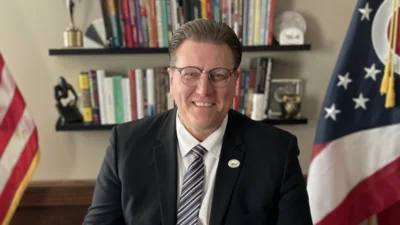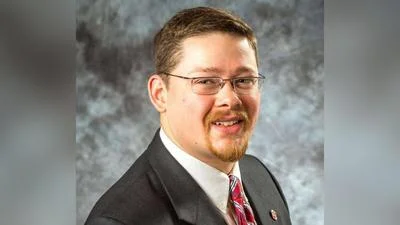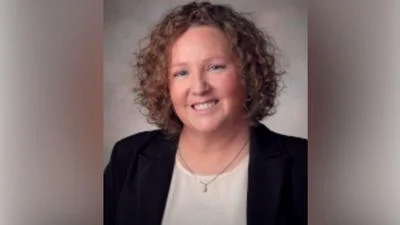
10 Indisputable Myths of the Open Roads/Frasier Solar Project
1) The Frasier Solar deal is a great deal financially for Knox County.
The Buckeye institute – an independent and educational research institution founded in 1989, found that “Ohio’s statutory maximum rates for such “payment-in-lieu-of-taxes” (PILOT) deals may well be too low for the Frasier Solar deal to make sense for the county’s taxpayers. Even if PILOT deals did offer a favorable financial return on investment for taxpayers, The Buckeye Institute’s research is documented on the previous page.
2) Solar Farms will not harm property values.
As one might expect, there are ZERO studies that show living close to a solar farm raises your property values. In fact, most real estate agents propose a 20-30% reduction in property values
www.americanexperiment.org “solar farms reduce nearby property values” www.arstechnica.com “solar farms lower property values.”
Landowners and counties beware. The company you lease to is unlikely to be the company you are dealing with for very long. Solar developers like Open Roads typically sell off their assets multiple times, sometimes before the first watt of electricity is created. The Hillcrest Solar Development in Brown County Ohio has already had multiple owners and local experts believe the damage done to the soil from compaction and drainage will make the land unfarmable after the solar project is long gone.
3) The panels of today won’t be obsolete in the near future.
In just a few short years, the hundreds of thousands of panels installed today will be obsolete. As it is with any new technology, the panels of today will be much cheaper to produce and probably more efficient in the near future. IN fact, the panels installed today, if all goes well, will decrease in their efficiency at least 1% each year.
Harvard Business Review (HBR.ORG) “The Dark Side of Solar Power”
4) It will be cheap and easy to clean up and dispose of broken or old panels.
In truth, the cost of solar trash will be astronomical. “The solar industry is woefully unprepared for the deluge of waste that is likely to come.”
Harvard Business Review (HBR.ORG) The Dark Side of Solar Power
According to the EPA, “Hazardous waste testing on solar panels in the marketplace has indicated that different varieties of solar panels have different metals present in the semiconductor and solder. Some of these metals, like lead and cadmium, are harmful to human health and the environ- ment at high levels. Solar panels with high quantities of these metals would be considered hazardous waste and would need special care in their removal, transport (only under a manifest designating it as hazardous waste) and long term waste storage.”
EPA.gov “end of life solar panels regulations and management”
5) The removal cost of solar farms will be easily covered by the several million dollars set apart by Frasier Solar.
This might be the worst myth of them all. Simple removal costs are conservatively estimated at $4/ftsq (175k per acre). Adding the requirement to restore the land to its original agricultural usage (topsoil, drainage, compaction issues, etc.), final costs when the project is either finished or no longer financially viable will be astronomical.
“Panels are delicate, bulky pieces of equipment. Only experienced, highly specialized workers are required to detach and remove solar panels, otherwise, they shatter to smithereens before they make it onto the truck. In addition, some governments classify solar panels as hazardous waste, due to the small amounts of heavy metals (cadmium, lead, etc.) they contain. This classification carries with it a string of expensive restrictions — hazardous waste can only be transported at designated times and via select routes, etc.”
By 2035, discarded panels would outweigh new units sold by 2.56 times. In turn, this would catapult the LCOE (levelized cost of energy, a measure of the overall cost of an energy-producing asset over its lifetime) to four times the current projection. The economics of solar — so bright-seeming from the vantage point of today — would darken quickly as the industry sinks under the weight of its own trash.
Harvard Business Review (HBR.ORG) “The Dark Side of Solar Power”
6) Solar farms do not cause flooding, water runoff problems or a decrease in the quality of water in their communities.
“The concern about solar panels contributing to the degradation of water quality is starting to be realized throughout the region. In March of this year, Virginia announced that solar projects would now be regulated as impervious surface areas in the Commonwealth, due to the amount of stormwater runoff that it generates. Rainwater falls on the panels, flowing off as it would the roof of a house. While some of the rain may be absorbed into the ground, some of it will also flow off the land, causing erosion and carrying sediments and pollution with it downstream. “
“Large-scale solar installations are causing state and local government agencies to look closely at proposed sites and weigh the costs and benefits associated with a reduced dependency on oil and gas against tree, habitat loss, and a decline in water quality. “
www.Chesapeakebay.net “The Solar Paradox”
7) Renewal energy providers are not underestimating the risk of fires.
“A recent report by Firetrace International found that the solar industry is potentially underesti- mating the risk of fire at solar farms, partly due to a shortage of data on solar farm fires. The report also said that research into the issue has given rise to the suspicions that fires at solar farms have been drastically under- reported. One of the things that solar farm operators tend to overlook is addressing these fire risks with fire mitigation strate- gies. Often, owners will simply rely on their insurance provider to cover a loss, rather than imple- menting fire suppression technology.”
www.insurancebusinessmag.com “fire a major hidden danger for solar farms”
Centerburg, Ohio school fire - Solar panels on Centerburg Elementary’s roof are being removed due to faulty wiring that caused an electrical fire in May.
See Knoxpages.com
8) Most communities with Solar Farms are happy with the initial project and are excited about starting new solar projects in their communities.
This is almost never the case. Many states, New York included, have set up moratoriums on new projects as a result of their experience with initial solar farms. In almost every case, future bans are put in place after the community lives through the actual construc- tion and ramification of their first solar field.
Maryland, like many other states that got wrapped up in the renew- able subsidy frenzy, came to a powerful conclusion after thou- sands of acres of their farmlands were changed to solar.
Maryland’s “Task Force on Renewable Energy Development and Siting” examines renewable energy siting issues, and in particular, siting of utility-scale solar on farmland. The task force came to the conclusion that Maryland would now explore non-farmland, utility-scale solar such as development on brown- fields, parking canopies, former landfills and old industrial areas.
See The Governor’s Task Force on Renewable Energy Development and Siting - final report - August 14, 2020
After the rapid rise of solar farms on agriculture lands in Maryland, the Ag said November 16, 2023, “We have to move to renewable energy. That is true. The other thing that’s true is we have to grow food here. We must keep solar off the most productive soils and find sites other than farmland, which solar developers like because it’s clear and relatively flat. Can’t we put it over Route 50?” Serena McIlwain, the state environment secretary, agreed with the AG secretary that solar and agriculture both need a future in Maryland. “We have to focus on this green transition,” she said. “At the same time, we have to do it in a way that we’re not leaving farmers behind.”
Maryland Ag Secretary Wants Solar and Farming to Coexist: Lancasterfarming.com

About us...
KSD grassroots purpose is personal to every one of us.
We are the defenders and the gatekeepers of Knox County to be and always be the best place to live, do business, raise our families, and to have the opportunity to realize our personal American dreams.
SIGN UP
www.knoxsmartdevelopment.com.
How Knox County residents feel about this
We were told that the commissioners knew about these solar projects being planned, two years ago. We did not learn about the solar projects until we received a letter March 27, 2023, from the Open Roads Renewable Company, located in Austin, Texas. The commissioners are supposed to be representing Knox County residents and keeping us informed, they failed
to do that. - the Boesharts
It is appalling that our elected officials allowed developers from Austin, Texas to come into our county and allow this to happen
- Rhonda Noble
Solar isn't good for farmers on their farmland or any amount of acreage that could be used for our food source. It boggles my mind that this is just surfacing
DO Some - Heather Zeigler
I am for common sense and it does not make sense to me to turn my hay fields or green soybean fields or green corn fields - in the name of green energy - into a bunch of black boxes that are not green fields.
- Tom Whatman
TAKE ACTION TO STOP THIS
Potential problems with solar on farmland.
Why it's a bad idea:
• Installation often consists of grading changes, soil compaction, and drain tile damage, which increases water runoff and can result in flooding and crop damage.
• Lowers neighboring property values.
• Regardless of where solar panels are manufactured ALL raw materials come from and are controlled by China.
• Solar panels can leach harmful metals and chemicals into groundwater.
• The only jobs created will be short term and temporary.
• Causes road destruction and increased crime during construction.
• Reduces agriculture jobs, which is
Ohio's leading job industry.
• Reduces farmland and increases food costs.
• Destroys beauty of rural areas for decades.
There is a smarter way to develop solar. Instead of using prime farmland just because it's cheap and easy, solar companies should develop on warehouse rooftops, parking lots and abandoned industrial sites.
Industrial solar already occupies thousands of acres of prime
Ohio farmland
ENOUGH IS ENOUGH!






